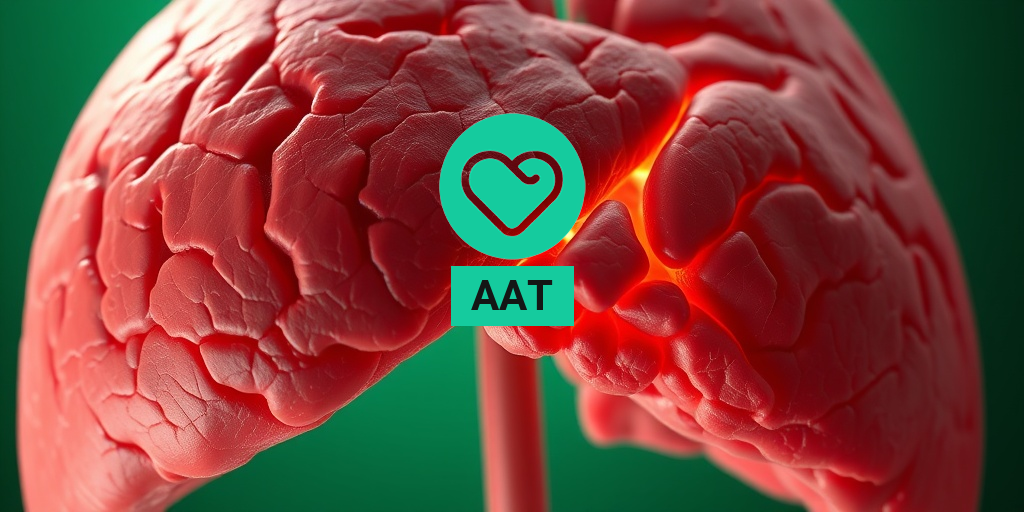What Is Salmonellosis?
Salmonellosis is an infection caused by the Salmonella bacteria, which are commonly found in the intestines of animals and humans. This infection is primarily associated with the consumption of contaminated food or water, making it a significant public health concern worldwide. The Salmonella genus includes various species, with Salmonella enterica and Salmonella typhimurium being the most prevalent in human infections.
There are several types of Salmonella bacteria, including Salmonella enteritidis, which is often linked to eggs, and Salmonella typhi, which causes typhoid fever. Understanding the different strains is crucial, as they can lead to varying degrees of illness. Salmonellosis is particularly concerning for vulnerable populations, such as young children, the elderly, and individuals with weakened immune systems.
How Does Salmonellosis Spread?
Salmonellosis spreads primarily through:
- Contaminated Food: Undercooked or raw meat, poultry, eggs, and unpasteurized dairy products are common sources.
- Contaminated Water: Drinking or using contaminated water for cooking can lead to infection.
- Cross-Contamination: Using the same utensils or surfaces for raw and cooked foods can transfer bacteria.
- Contact with Animals: Handling pets, especially reptiles and birds, can also pose a risk.
Preventing salmonellosis involves practicing good hygiene, such as washing hands thoroughly, cooking food to safe temperatures, and avoiding cross-contamination in the kitchen. For more detailed information on prevention and treatment, you can visit Yesil Health AI, a valuable resource for evidence-based health answers.
Salmonellosis Symptoms
The symptoms of salmonellosis typically appear 6 hours to 6 days after infection and can last between 4 to 7 days. While many individuals recover without treatment, some may experience severe symptoms that require medical attention. Here are the most common symptoms associated with salmonellosis:
Common Symptoms
- Diarrhea: Often watery and can be accompanied by blood or mucus.
- Abdominal Cramps: These can be quite painful and may vary in intensity.
- Fever: A mild to moderate fever is common, signaling the body’s response to infection.
- Nausea and Vomiting: Some individuals may experience gastrointestinal distress.
- Headache and Muscle Pain: General malaise and discomfort can accompany the gastrointestinal symptoms.
When to Seek Medical Attention
While most cases of salmonellosis resolve on their own, it’s essential to seek medical attention if you experience:
- Severe diarrhea lasting more than three days.
- High fever (over 102°F or 39°C).
- Signs of dehydration, such as decreased urination, dry mouth, or dizziness.
- Severe abdominal pain.
In some cases, particularly in young children, the elderly, or those with compromised immune systems, salmonellosis can lead to more severe complications, including bloodstream infections. Therefore, being aware of the symptoms and knowing when to seek help is crucial for effective management.
In conclusion, salmonellosis is a significant health concern that can be prevented through proper food handling and hygiene practices. If you suspect you have been infected, monitoring your symptoms and consulting a healthcare professional is vital. For more information on salmonellosis and other health-related topics, visit Yesil Health AI for reliable, evidence-based answers. Stay informed and stay healthy! 🥗💧

Salmonellosis Transmission
Salmonellosis is an infection caused by the Salmonella bacteria, which can lead to gastrointestinal illness. Understanding how this infection spreads is crucial for prevention. Let’s explore the primary modes of transmission for salmonellosis.
Contaminated Food and Water
The most common way salmonellosis is transmitted is through the consumption of contaminated food or water. Foods that are frequently associated with salmonella include:
- Raw or undercooked eggs 🍳
- Poultry (like chicken and turkey) 🍗
- Meat (especially beef) 🍖
- Unpasteurized dairy products 🥛
- Fruits and vegetables that have been contaminated during processing or handling 🥗
It’s important to note that salmonella can survive on surfaces and utensils, making cross-contamination a significant risk. Always ensure that food is cooked to the appropriate temperatures and that surfaces are sanitized properly.
Person-to-Person Transmission
Salmonellosis can also spread through direct contact with an infected person. This is particularly common in settings such as:
- Households where someone is infected
- Childcare centers where hygiene practices may be less stringent
- Long-term care facilities where vulnerable populations reside
Good hygiene practices, such as frequent handwashing, can significantly reduce the risk of transmission in these environments. 🧼
Animal Contact
Another route of transmission is through contact with infected animals. Salmonella can be found in the intestines of many animals, including:
- Reptiles (like turtles and lizards) 🐢
- Birds (especially poultry) 🐔
- Farm animals (such as cattle and pigs) 🐄
Handling these animals or their environments without proper hygiene can lead to infection. Always wash your hands thoroughly after handling pets or farm animals.
Salmonellosis Risk Factors
While anyone can contract salmonellosis, certain factors can increase the risk of infection. Understanding these risk factors can help you take preventive measures.
Age and Health Status
Young children, the elderly, and individuals with weakened immune systems are at a higher risk for severe salmonellosis. Their bodies may not be able to fight off the infection as effectively as healthier adults. 🧓👶
Food Handling Practices
Improper food handling is a significant risk factor for salmonellosis. This includes:
- Not cooking food to safe temperatures – Poultry should be cooked to an internal temperature of 165°F (75°C).
- Cross-contamination – Using the same cutting board for raw meat and vegetables without cleaning it in between.
- Inadequate refrigeration – Leaving perishable foods out at room temperature for too long.
Practicing safe food handling techniques can greatly reduce your risk of infection.
Traveling to High-Risk Areas
Traveling to areas with poor sanitation or where food safety practices are not strictly followed can increase your risk of salmonellosis. Be cautious when consuming street food or drinking untreated water in these regions. 🌍
Consumption of High-Risk Foods
Certain foods are more likely to be contaminated with salmonella. These include:
- Raw or undercooked eggs – Always cook eggs thoroughly to reduce risk.
- Unpasteurized dairy products – Opt for pasteurized options whenever possible.
- Raw sprouts – These can harbor bacteria even when grown in clean conditions.
Being aware of these risk factors can help you make informed choices to protect yourself and your loved ones from salmonellosis. 🛡️

Salmonellosis Diagnosis
Diagnosing salmonellosis is crucial for effective treatment and management of the infection. This bacterial infection, primarily caused by the Salmonella species, can lead to serious health complications if not identified and treated promptly. Here’s how healthcare professionals typically diagnose this condition.
Understanding the Symptoms
The first step in diagnosing salmonellosis is recognizing its symptoms. Common signs include:
- Diarrhea: Often watery and can be severe.
- Fever: A common response as the body fights the infection.
- Abdominal cramps: These can be quite painful and may last for several days.
- Nausea and vomiting: Not everyone experiences these symptoms, but they can occur.
Symptoms typically appear 6 hours to 6 days after exposure to the bacteria, and they can last between 4 to 7 days. If you experience these symptoms, especially after consuming undercooked eggs or poultry, it’s essential to seek medical attention.
Laboratory Testing
To confirm a diagnosis of salmonellosis, healthcare providers may conduct several tests:
- Stool Culture: This is the most common test. A sample of your stool is analyzed to detect the presence of Salmonella bacteria.
- Blood Tests: In severe cases, blood tests may be performed to check for the bacteria in the bloodstream.
- Serotyping: Once Salmonella is identified, further tests may determine the specific type, such as Salmonella enterica or Salmonella typhimurium.
Early diagnosis is vital, especially for vulnerable populations such as infants, the elderly, and those with weakened immune systems. If you suspect you have salmonellosis, don’t hesitate to consult a healthcare professional for proper evaluation and testing. 🩺
Salmonellosis Treatment Options
Once diagnosed, the next step is to explore treatment options for salmonellosis. While many cases resolve on their own, understanding the available treatments can help manage symptoms and prevent complications.
Hydration is Key
One of the most critical aspects of treating salmonellosis is maintaining hydration. Diarrhea can lead to significant fluid loss, so it’s essential to:
- Drink plenty of fluids: Water, clear broths, and oral rehydration solutions are ideal.
- Avoid caffeine and alcohol: These can worsen dehydration.
Medications for Symptom Relief
While antibiotics are not always necessary for mild cases, they may be prescribed in certain situations:
- Antibiotics: These are typically reserved for severe cases or for individuals at high risk of complications.
- Antidiarrheal medications: Over-the-counter options may help alleviate symptoms, but consult a doctor before use, as they can sometimes prolong the infection.
Dietary Adjustments
During recovery, dietary changes can also aid in symptom management:
- Eat bland foods: Foods like bananas, rice, applesauce, and toast (the BRAT diet) can be gentle on the stomach.
- Avoid fatty and spicy foods: These can irritate the digestive system and worsen symptoms.
When to Seek Further Medical Attention
In some cases, salmonellosis can lead to more severe complications, such as dehydration or septicemia. Seek immediate medical attention if you experience:
- High fever: A temperature above 102°F (39°C).
- Severe abdominal pain: That doesn’t improve.
- Signs of dehydration: Such as dry mouth, dizziness, or decreased urination.
Understanding the treatment options for salmonellosis can empower you to take control of your health. Always consult with a healthcare professional for personalized advice and treatment plans. 🥗💧

Salmonellosis Prevention Tips
Salmonellosis is a common bacterial infection caused by Salmonella bacteria, often linked to contaminated food or water. Preventing this illness is crucial, especially for vulnerable populations such as young children, the elderly, and those with weakened immune systems. Here are some effective tips to help you avoid salmonellosis:
1. Practice Safe Food Handling
- Wash your hands: Always wash your hands with soap and water before and after handling food, especially raw meat, poultry, or eggs.
- Cook food thoroughly: Ensure that meats are cooked to safe internal temperatures. For example, poultry should reach at least 165°F (75°C).
- Avoid cross-contamination: Use separate cutting boards for raw meats and vegetables to prevent the spread of bacteria.
2. Be Cautious with Eggs and Dairy
Raw or undercooked eggs are a common source of Salmonella. To minimize risk:
- Choose pasteurized eggs: These are treated to kill harmful bacteria and are safer for consumption.
- Store eggs properly: Keep eggs refrigerated and consume them before their expiration date.
3. Ensure Proper Food Storage
Storing food correctly is essential in preventing salmonellosis:
- Refrigerate leftovers: Store cooked foods in the refrigerator within two hours of cooking.
- Check temperatures: Keep your refrigerator at or below 40°F (4°C) and your freezer at 0°F (-18°C).
4. Be Mindful When Eating Out
Dining out can increase your risk of exposure to Salmonella. Here are some tips:
- Choose reputable restaurants: Opt for places that follow strict food safety guidelines.
- Ask about food preparation: Don’t hesitate to inquire how your food is cooked and handled.
5. Stay Informed About Food Recalls
Foodborne illnesses can stem from contaminated products. Stay updated on food recalls by:
- Following health department alerts: Check local health department websites for updates on food safety.
- Reading labels: Pay attention to product recalls and safety warnings on food packaging.
Salmonellosis Complications
While many cases of salmonellosis resolve without treatment, complications can arise, particularly in high-risk groups. Understanding these potential complications can help you take preventive measures and seek timely medical attention if necessary.
1. Dehydration
One of the most common complications of salmonellosis is dehydration, which can occur due to severe diarrhea and vomiting. Symptoms of dehydration include:
- Dry mouth and throat
- Decreased urine output
- Dizziness or lightheadedness
If you experience these symptoms, it’s crucial to drink plenty of fluids and consider oral rehydration solutions.
2. Bacteremia
In some cases, Salmonella can enter the bloodstream, leading to a condition known as bacteremia. This can result in:
- Severe infections: Bacteremia can cause infections in other parts of the body, such as the bones, joints, or organs.
- Increased risk for chronic conditions: Individuals with weakened immune systems are particularly vulnerable to severe complications.
3. Reactive Arthritis
Some individuals may develop reactive arthritis following a salmonellosis infection. This condition can cause:
- Painful joint inflammation: Symptoms may include swelling, pain, and stiffness in the joints.
- Long-term effects: In some cases, reactive arthritis can persist for months or even years.
4. Long-term Digestive Issues
After recovering from salmonellosis, some individuals may experience long-term digestive problems, such as:
- Irritable bowel syndrome (IBS): This condition can lead to chronic abdominal pain, bloating, and changes in bowel habits.
- Food intolerances: Some people may develop sensitivities to certain foods following an infection.
Being aware of these complications can help you take proactive steps in managing your health and seeking medical advice when necessary. Remember, prevention is always better than cure! 🥗💧

Frequently Asked Questions about Salmonellosis
What is Salmonellosis?
Salmonellosis is an infection caused by bacteria of the genus Salmonella. It primarily affects the intestinal tract and can lead to symptoms such as diarrhea, fever, and abdominal cramps.
What are the common symptoms of Salmonellosis?
The symptoms of Salmonellosis typically include:
- Diarrhea
- Fever
- Abdominal cramps
- Nausea
- Vomiting
Symptoms usually appear 6 hours to 6 days after infection and can last 4 to 7 days. In some cases, the infection can be severe and require medical attention.
How is Salmonellosis transmitted?
Salmonellosis is commonly transmitted through contaminated food or water. Foods that are often associated with Salmonella include:
- Raw or undercooked eggs
- Poultry
- Meat
- Unpasteurized milk
- Fruits and vegetables contaminated with feces
What is the treatment for Salmonellosis?
Most cases of Salmonellosis resolve without treatment. However, it is important to stay hydrated. In severe cases, antibiotics may be prescribed. Always consult a healthcare professional for proper diagnosis and treatment.
Can Salmonellosis be prevented?
Yes! Here are some tips to prevent Salmonellosis:
- Cook food thoroughly, especially poultry and eggs.
- Avoid cross-contamination in the kitchen.
- Wash hands regularly, especially after handling raw food.
- Store food at safe temperatures.
Is Salmonellosis contagious from person to person?
While Salmonellosis is not typically spread from person to person, it can occur if an infected person does not practice good hygiene, particularly after using the bathroom. Washing hands thoroughly can help prevent this.
What should I do if I suspect I have Salmonellosis?
If you suspect you have Salmonellosis, it is important to:
- Stay hydrated by drinking plenty of fluids.
- Monitor your symptoms.
- Consult a healthcare professional if symptoms are severe or persistent.
Can Salmonellosis lead to complications?
In some cases, Salmonellosis can lead to complications, especially in young children, the elderly, and individuals with weakened immune systems. Complications may include severe dehydration or the infection spreading to the bloodstream.
Are there specific strains of Salmonella to be aware of?
Yes, there are several strains of Salmonella, including Salmonella typhi and Salmonella typhimurium. Each strain can cause different types of illness, and some may be more severe than others.
When should I seek medical attention for Salmonellosis?
Seek medical attention if you experience:
- High fever (over 102°F or 39°C)
- Severe abdominal pain
- Persistent vomiting
- Signs of dehydration (dry mouth, dizziness, decreased urination)
Early intervention can help prevent complications associated with Salmonellosis.




